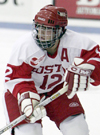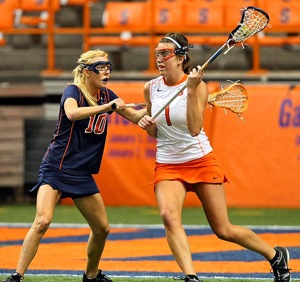Update: Within minutes of my posting this, Todd from USCHO Tweeted at me, said he saw the point and made today’s Starman column free. He also responded in the comments. Class act! Thank you!
———–
I have had thoughts swimming around in my head over the past week regarding the Wall Street Journal article surrounding the growth of college hockey, as well as national hockey commentator and CBS College Sports on-air personality Dave Starman’s USCHO “rebuttal” (to an article that was overwhelmingly positive, I might add.) As my Twitter followers know, my month long battle with bronchitis came to a head as both articles were posted – I ended up in the hospital with a far worse infection – and thus, I wasn’t able to write a response in a timely manner. I was going to leave the issue be.
Then on Wednesday morning, USCHO posted a further Starman commentary where he responds to the many comments he received on his rebuttal. But I, and many other college hockey fans couldn’t read it. It is posted behind USCHO‘s pay wall, called “USCHO Extra”, which costs $14.99 a year.
Isn’t the fact that USCHO hid this rebuttal-of-a-rebuttal behind a pay wall essentially one of the things inhibiting the growth of college hockey? College hockey is a growing sport with a feverous fan base, with message board posters and lurkers galore, with hundreds of Twitter users wanting to be the next Starman or Jim Connolly or Adam Wodon or Bernie Corbett. How can you inhibit this fan base from reading your pieces? Isn’t hiding your content, especially content about an important conversation about the future of the game, behind a pay wall almost an oxymoron?
That a prominent online media source is making their readers pay to access an author’s response to comments, is both traditional and online journalisticly misguided. A good journalist should respond to his or her critics, as long as they are not personally attacking them, in the same forum in which he or she posted the original piece and/or an easily accessible, preferably free, forum. Starman’s original piece last week was free for all to read on USCHO.com. His response to the comments and emails is behind a pay wall, thereby reducing his readership on a popular topic, and shutting out most likely over half of his original readers. I am not saying he had to respond to every commenter or emailer, or even do so on USCHO itself. His feedback just needs to be accessible to the majority of his readers. Take Sports Illustrated’s Peter King or the Rochester Democrat and Chronicle’s Sal Marjorana – they are two polarizing football journalists who respond to their critics via Twitter, a free-of-charge social media tool. It may not be in the original comment section of their pieces, but you can easily find the two and challenge their controversial sentiments (even if their response may be snarky or not you wanted to hear.)
I am not blind to the costs of hosting and maintaining a large-scale website – frankly, it is becoming more than half of my full-time job in higher education and is what I do for various other sites on my home computer after dinner every evening. I understand that ad revenue alone rarely covers the payment of journalists, the hosting, the design, the forum moderation – all the tools that make USCHO one of the big three sites in college hockey. But is college hockey in a place within the American sports landscape that any site can justify having a pay wall?
Isn’t that, after all, the larger question that Starman – and the Wall Street Journal before him – asking with last week’s pieces? Is college hockey a sport that can sustain past the gimmicky nature of the annual outdoor game? And if both the WSJ and Starman are correct and the sport is still growing in popularity with a much higher future ahead of it, why cut off access to any information, discussion or features that may grow the fan base?



